Introduction
Understanding and managing code complexity is essential for developing high-quality, maintainable software. McCabe Cyclomatic Complexity, introduced by Thomas McCabe in 1976, is a pivotal metric that quantifies a program's complexity by measuring the number of linearly independent paths through its source code. This metric is crucial for evaluating structural intricacies that significantly impact maintenance, testing, and debugging processes.
High cyclomatic complexity scores indicate more intricate code structures, posing increased risks for errors and higher maintenance costs. By leveraging tools and best practices to measure and manage code complexity, developers can enhance code readability, maintainability, and overall quality, ultimately leading to more robust and efficient software solutions. This article delves into the importance of measuring code complexity, how to calculate McCabe Cyclomatic Complexity, best practices for managing complexity, and the tools available to aid in this process, as well as examining the limitations of this metric and other complementary metrics.
What is McCabe Cyclomatic Complexity?
McCabe Cyclomatic Complexity is an essential measure for evaluating a program's intricacy by assessing the number of linearly independent routes through its source material. Introduced by Thomas McCabe in 1976, this metric assesses the structural intricacies of programs, which significantly affects maintenance, testing, and debugging processes. Fundamentally, a higher cyclomatic intricacy score indicates a more elaborate structure, presenting greater risks for mistakes and increased maintenance expenses. This measurement is derived from the program's control flow graph, a visual aid that helps developers understand the program's execution flow. For example, just as maneuvering through a complicated intersection demands careful focus on various traffic signals and lanes, grasping cyclomatic intricacy entails examining numerous decision points and routes within the program. According to studies, high cyclomatic intricacy can lead to a greater likelihood of bugs and increased difficulty in managing the codebase, highlighting the importance of maintaining lower intricacy for better software quality and reliability.
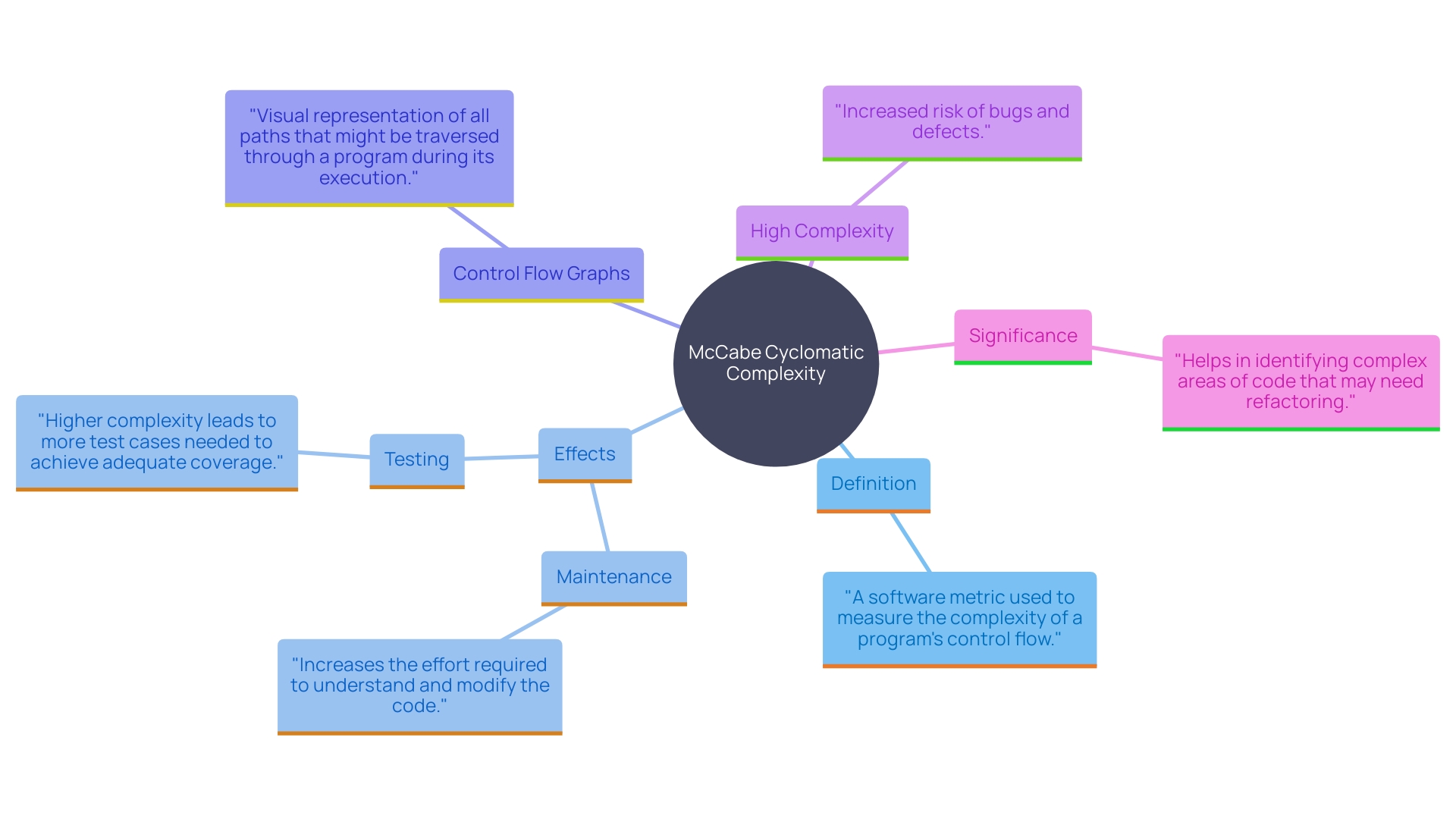
Why Measure Code Complexity?
Assessing program complexity is essential for various reasons. Firstly, it aids in identifying parts of the program that are difficult to test and maintain. By identifying these complex areas, developers can prioritize their optimization efforts more effectively. For instance, Google's approach to software health, which uses a detailed scale from 1.0 to 10.0, allows them to concentrate on high-risk areas, reducing time spent on reviews significantly. Secondly, assessments of intricacy can assist in making choices about restructuring, which is vital for enhancing software standards and reducing technical obligations. Microsoft’s latest report on the Future of Work emphasizes the importance of addressing technical debt to prevent long-term issues. Finally, grasping programming intricacy encourages improved teamwork among group members by offering a shared terminology for talking about software quality. This is evident in the use of Code Health metrics that categorize code into Green, Yellow, and Red, making it easier to communicate with both technical and non-technical stakeholders.
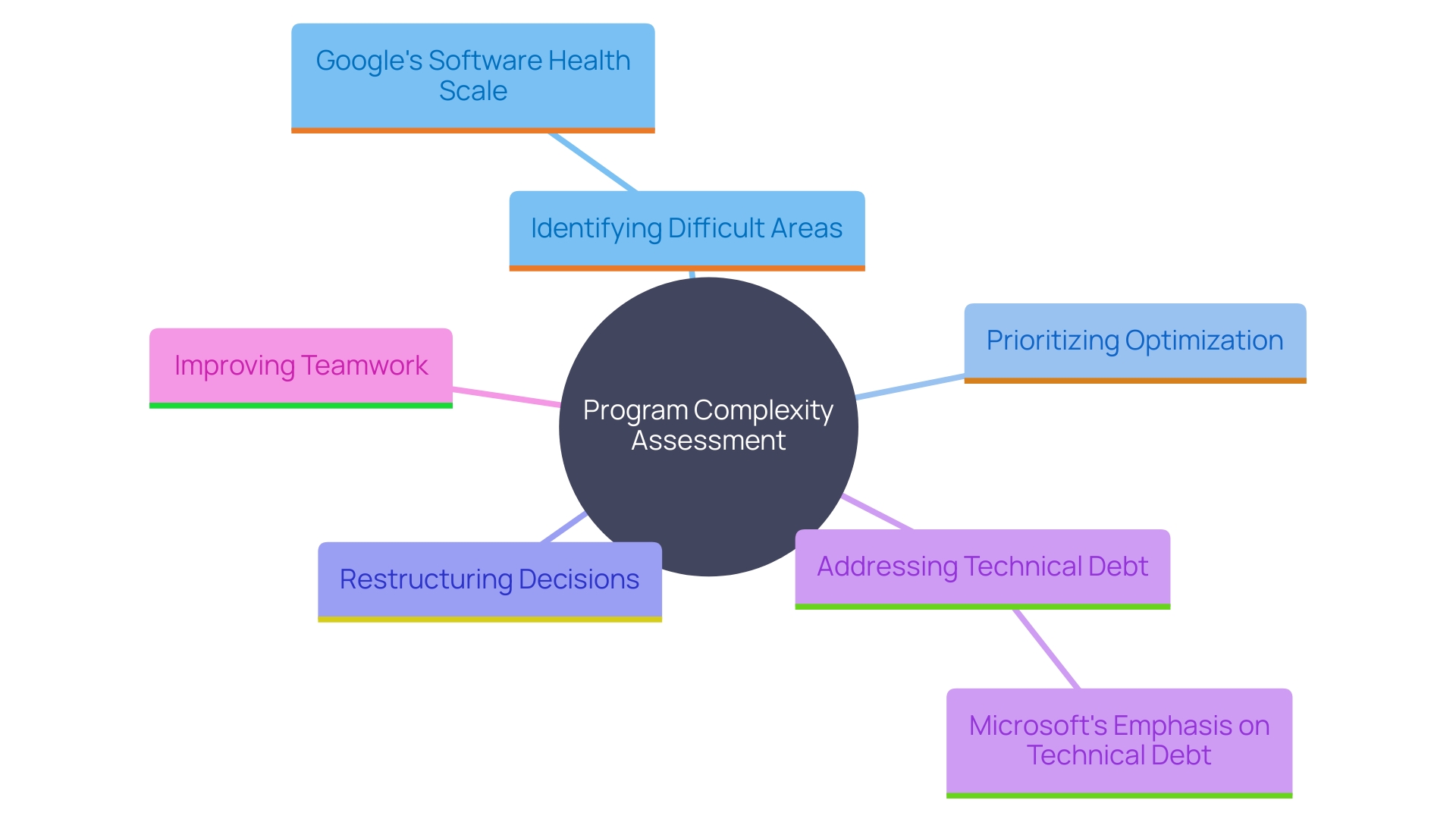
Calculating McCabe Cyclomatic Complexity
To calculate McCabe Cyclomatic Complexity, one uses the formula: V(G) = E - N + 2P. 'Here, V(G) denotes the cyclomatic intricacy, E is the number of edges in the control flow graph, N is the number of nodes, and P signifies the number of connected components (typically 1 for a single program). This calculation can be illustrated using control flow graphs, which offer a clear understanding of the program's flow and intricacy. For example, in a program where a function contains 100 lines of instructions, the difficulty rises significantly. Visual representations such as graphs assist in examining entities within programming (functions, variables, classes) and their interconnections, thus improving analysis and quality. As per a research, elevated cyclomatic intricacy directly relates to the heightened risk of mistakes, making it more difficult to manage and sustain the programming.
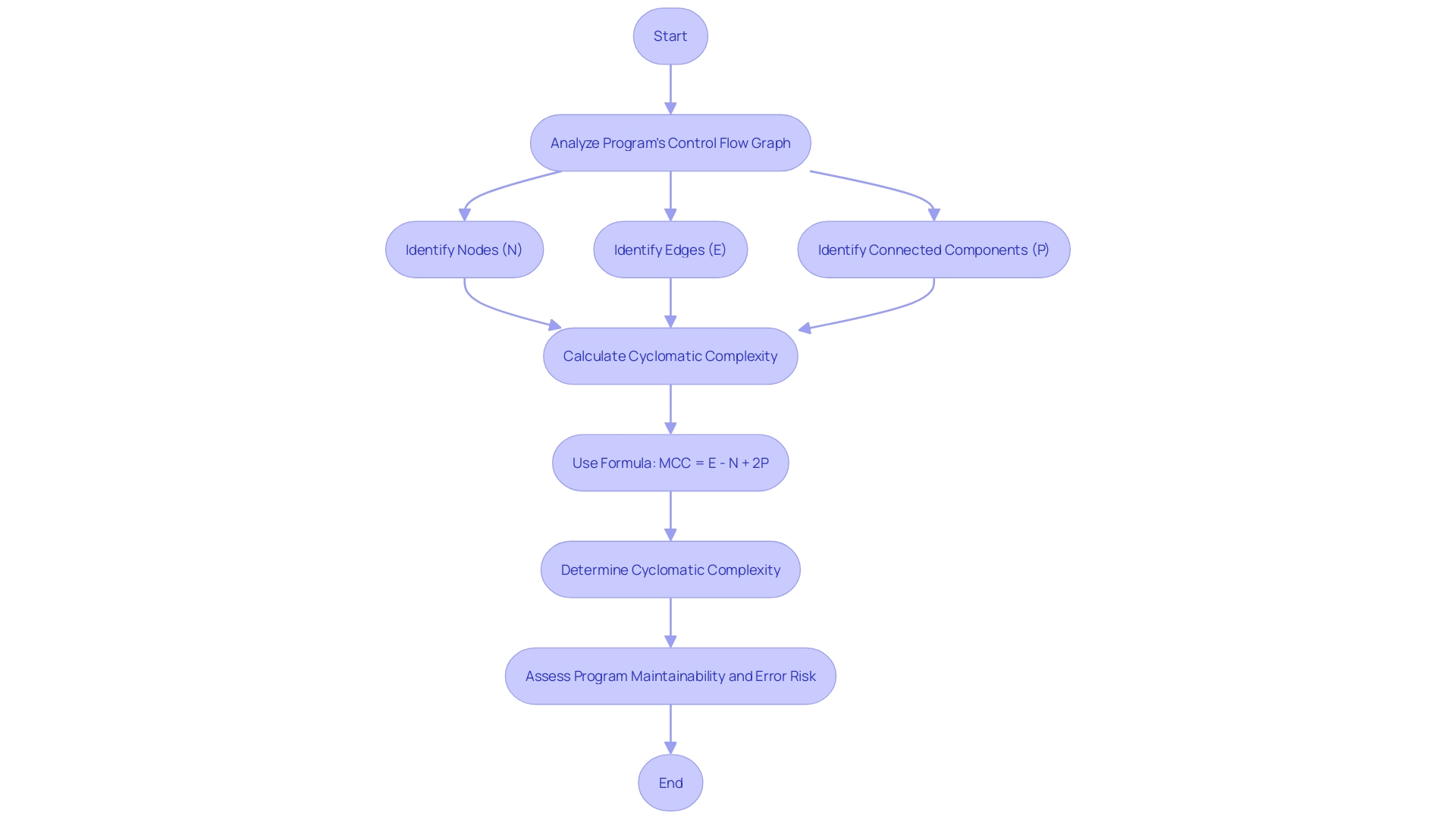
Best Practices for Managing Code Complexity
Successfully handling programming intricacy necessitates a diverse strategy. Routine assessments of the software are vital for pinpointing excessively intricate parts early in the development phase, guaranteeing that possible problems are tackled swiftly. Implementing modular design principles plays a crucial role in breaking down large codebases into smaller, more manageable components. This not only decreases individual intricacy but also enhances reusability and scalability. For example, the 'Facade' design pattern simplifies interaction with complex subsystems by providing a unified interface, making the overall system easier to use and maintain.
Employing design patterns, as emphasized by the 'Gang of Four' in their influential book on software engineering, assists developers in steering clear of common pitfalls and producing efficient, scalable, and maintainable solutions. These patterns offer proven solutions to recurring problems, streamlining the development process. For instance, the 'Facade' pattern can be particularly useful when dealing with large and intricate frameworks, offering a simplified interface to complex functionalities.
Thorough documentation is another essential element of handling complexity in programming. Clear and concise comments, along with detailed explanations of functions and methods, facilitate understanding and maintenance. This practice not only aids current developers but also helps new team members acclimate more quickly. As noted in industry research, well-documented and healthy codebases significantly reduce implementation times, giving businesses a competitive edge.
By following these practices—regular evaluations, modular design, design patterns, and comprehensive documentation—developers can improve the readability, maintainability, and overall standard of their work, ultimately leading to more robust and efficient software solutions.
Tools for Measuring Code Complexity
A variety of tools are available for measuring McCabe Cyclomatic Complexity and other programming metrics, each offering unique features to enhance the standard of the program. 'SonarQube, an open-source static assessment tool, stands out by providing continuous monitoring, detailed analysis, and comprehensive reporting.'. Its reports highlight potential issues and offer actionable recommendations, empowering developers to refine their codebases over time.
CodeClimate integrates seamlessly with version control systems, facilitating continuous quality monitoring of the software. This integration allows for real-time feedback, helping developers address issues promptly. Likewise, Visual Studio and EclEmma provide integrated complexity analysis functionalities that simplify the task of assessing complexity in software.
Other notable tools include Coverity, CodeScene, and Veracode, which analyze software for vulnerabilities and coding standard violations. These tools offer comprehensive measurements that assist developers in grasping and enhancing the quality of their software, guaranteeing it is strong, safe, and easy to maintain. By utilizing these tools, developers can concentrate on creating clean, reusable, and testable programs, ultimately improving the overall quality and performance of their projects.
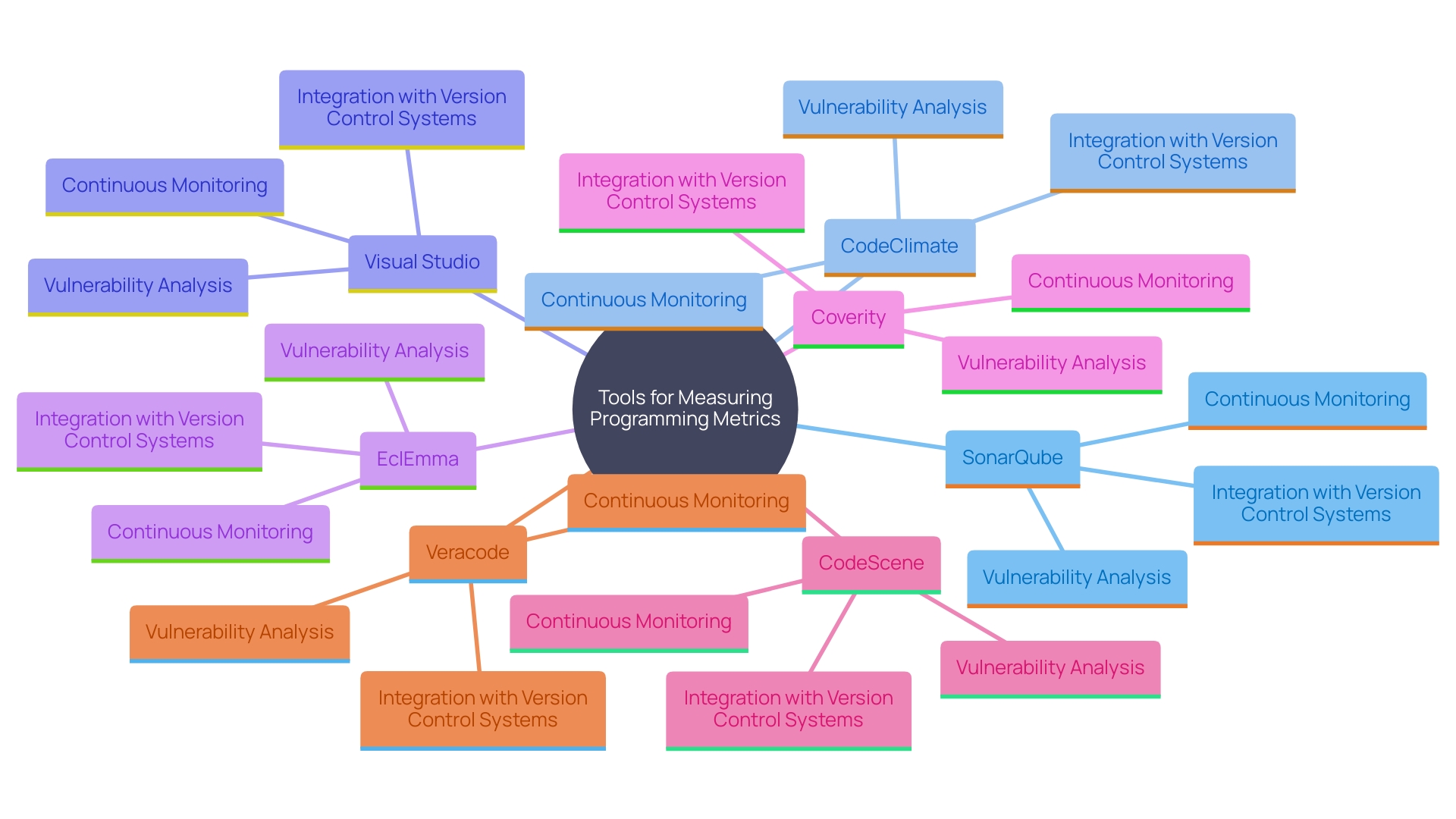
Limitations of Cyclomatic Complexity
'While McCabe Cyclomatic Complexity serves as a valuable metric for assessing complexity by focusing on control flow, it does have its limitations.'. It doesn't consider other essential factors that contribute to overall programming quality, such as readability or the presence and quality of comments. Research has demonstrated that readability is greatly affected by several elements, including the consistency of documentation and comments. For instance, a study analyzing high-resolution data from over 50 proprietary codebases revealed that even a codebase with high code health hasn't reached its full potential without addressing readability factors.
Moreover, cyclomatic complexity might not effectively capture the intricacies of modern programming paradigms like asynchronous or functional programming. These paradigms present distinct challenges that are not sufficiently represented by conventional control flow measurements. For instance, the progression of programming standards over time, as seen in a vast collection of C and Java scripts, suggests that developers' actions and the historical backdrop of the scripts greatly influence their maintainability and readability.
Consequently, it is crucial to utilize cyclomatic intricacy alongside additional measurements and qualitative evaluations to achieve a thorough understanding of software quality. This approach aligns with findings that emphasize the importance of integrated documentation practices to enhance the development lifecycle. By continuously updating documentation alongside programming modifications, the effort required for program understanding is diminished, encouraging better knowledge transfer and overall project wellness.
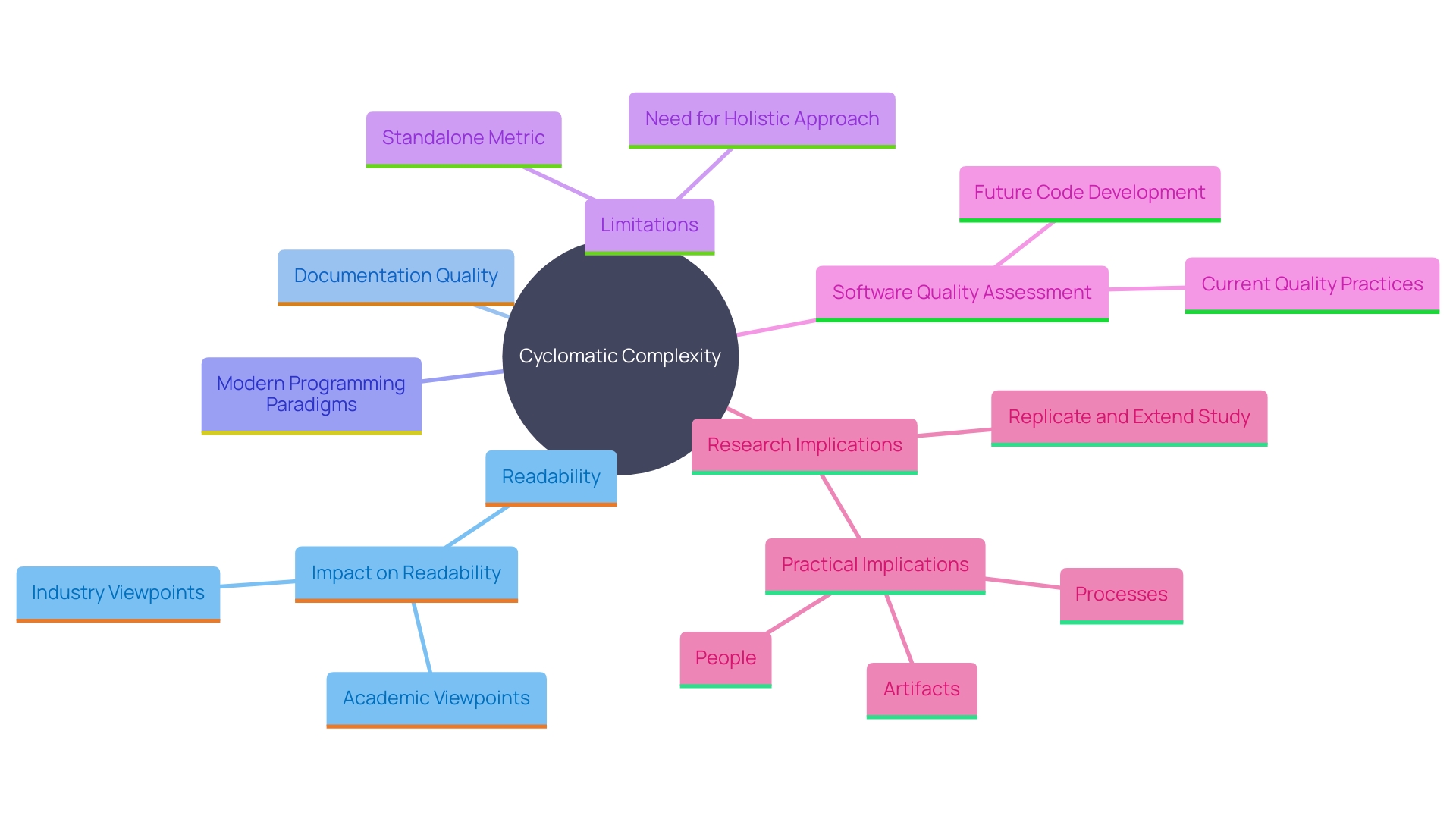
Other Metrics for Code Complexity
Aside from McCabe Cyclomatic Difficulty, numerous other measurements provide useful perspectives on programming intricacy. Halstead Complexity, for instance, assesses the number of operators and operands in the program, offering a thorough insight into its computational workload. The maintainability index, which combines cyclomatic complexity, lines of instructions, and Halstead measures, offers a comprehensive view of maintainability. 'Based on studies, developers adjust the standard of their contributions depending on the current condition of the software they come across.'. This implies that utilizing a blend of these measures can aid in upholding high standards in software quality, affecting future development favorably. Empirical data shows that high-quality code can significantly reduce the time needed to implement new features, giving businesses a competitive edge. Thus, utilizing these diverse metrics enables developers to make informed decisions about refactoring and optimization, ultimately impacting the business's bottom line.
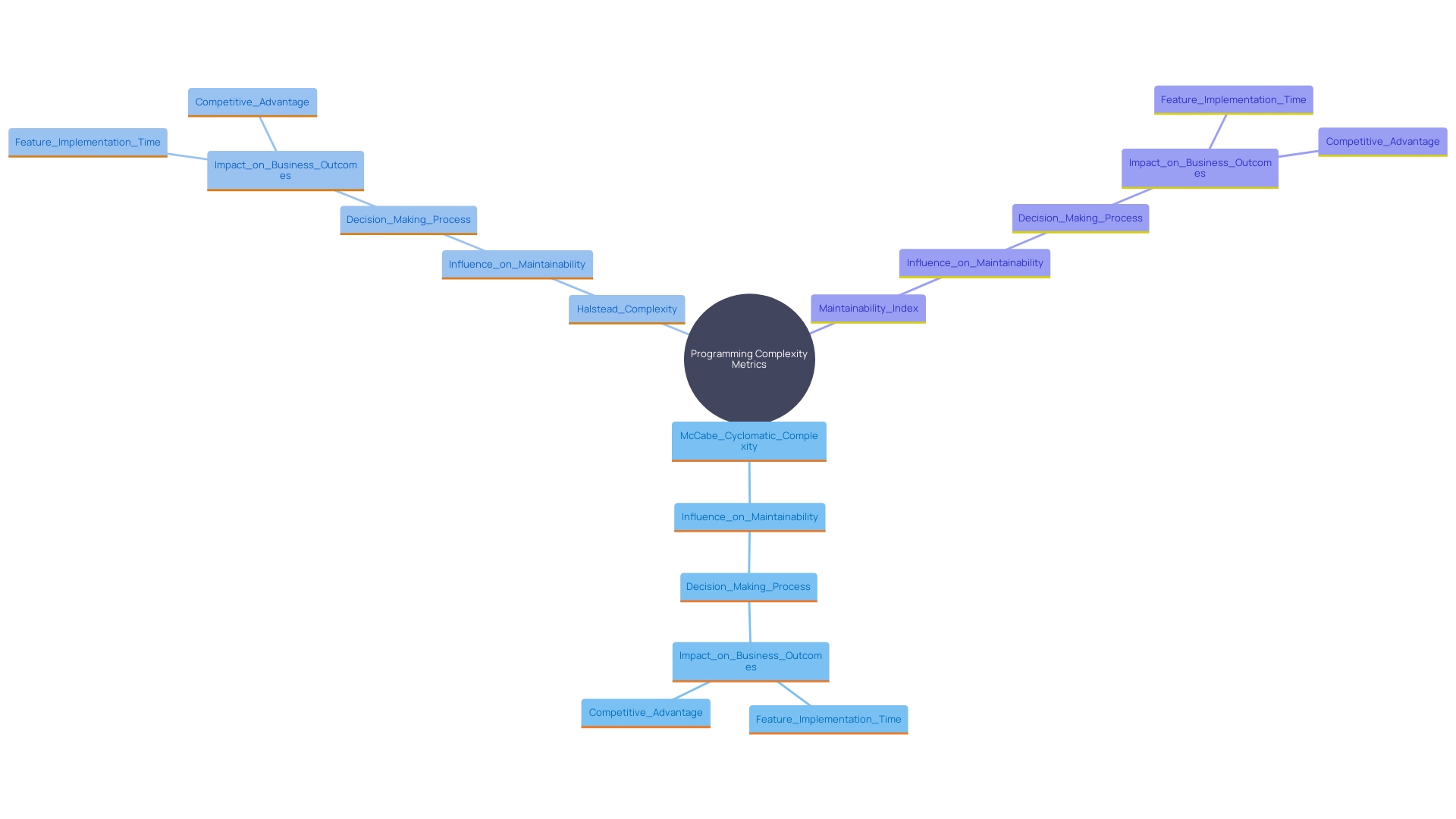
Conclusion
Understanding and managing code complexity is essential for delivering high-quality software. McCabe Cyclomatic Complexity serves as a vital tool in this regard, providing developers with insights into the structural intricacies of their code. By quantifying the number of linearly independent paths through a program, this metric highlights areas that may pose risks for errors and increased maintenance costs.
The significance of measuring code complexity cannot be overstated, as it aids in identifying challenging segments, guiding refactoring efforts, and fostering better collaboration among team members.
Effective management of code complexity hinges on adopting best practices such as regular code reviews, modular design, the use of design patterns, and comprehensive documentation. These strategies not only enhance readability and maintainability but also contribute to the overall quality of the software. Furthermore, leveraging tools like SonarQube and CodeClimate can streamline the process of measuring complexity, allowing developers to focus on writing clean and testable code.
While McCabe Cyclomatic Complexity is a valuable metric, it is crucial to recognize its limitations. It should be complemented with other metrics and qualitative assessments to achieve a holistic view of code quality. By integrating various metrics, developers can make informed decisions about optimization and refactoring, ultimately leading to more efficient software solutions.
Embracing these practices and tools not only enhances code quality but also positions businesses for long-term success in an increasingly competitive landscape.
Frequently Asked Questions
What is McCabe Cyclomatic Complexity?
McCabe Cyclomatic Complexity is a metric used to evaluate the intricacy of a program by assessing the number of linearly independent routes through its source code. It was introduced by Thomas McCabe in 1976 and is derived from the program's control flow graph.
Why is Cyclomatic Complexity important?
This metric is crucial because it impacts maintenance, testing, and debugging processes. A higher cyclomatic complexity score indicates a more complex structure, which is linked to a greater risk of errors and increased maintenance costs.
How is Cyclomatic Complexity calculated?
Cyclomatic Complexity is calculated using the formula: V(G) = E - N + 2P, where V(G) is the cyclomatic complexity, E is the number of edges in the control flow graph, N is the number of nodes, and P is the number of connected components (usually 1 for a single program).
What are the implications of high Cyclomatic Complexity?
High cyclomatic complexity often leads to a higher likelihood of bugs and increases the difficulty in managing the codebase. This emphasizes the need to maintain lower complexity for better software quality and reliability.
How can developers manage programming complexity?
To effectively handle programming complexity, developers should conduct regular assessments, implement modular design principles, utilize design patterns, and maintain thorough documentation. These practices enhance readability and maintainability.
What tools are available for measuring Cyclomatic Complexity?
Various tools can measure McCabe Cyclomatic Complexity, including SonarQube, CodeClimate, Visual Studio, and EclEmma. These tools provide continuous monitoring and analysis, helping developers enhance their code quality.
What are the limitations of Cyclomatic Complexity?
While McCabe Cyclomatic Complexity is a valuable metric, it does not account for other important factors like code readability and documentation quality. Additionally, it may not effectively capture the complexities associated with modern programming paradigms, such as asynchronous or functional programming.
What other metrics can be used alongside Cyclomatic Complexity?
Other metrics that provide insights into programming complexity include Halstead Complexity and the Maintainability Index. Combining these metrics can help developers maintain high software quality and inform decisions about refactoring and optimization.
How does understanding Cyclomatic Complexity benefit teamwork?
Understanding programming complexity fosters better communication among team members by providing a shared terminology for discussing software quality. This can enhance collaboration and streamline the development process.
Why is documentation important in managing complexity?
Clear and concise documentation is essential for understanding and maintaining complex code. It aids current developers and helps new team members acclimate more quickly, ultimately contributing to a more efficient development lifecycle.




